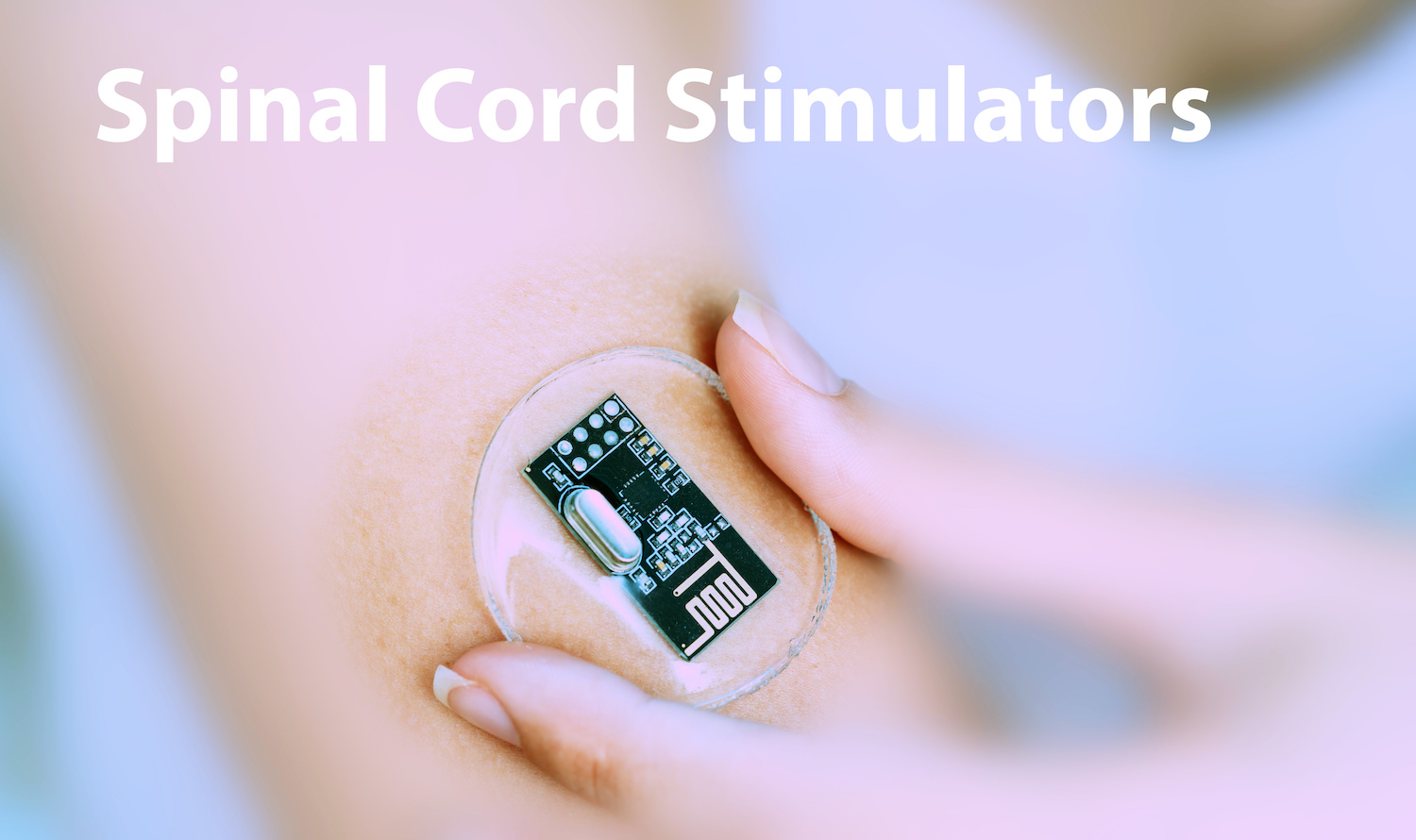
Spinal Cord Stimulators (SCS): Everything You Need to Know
In this guide, we’ll break down everything you need to know about spinal cord stimulators—how they work, who they help, what to expect, and the benefits and risks to consider.

What Is a Spinal Cord Stimulator?
A spinal cord stimulator is a small device that is surgically implanted in a person’s body to reduce chronic pain by sending gentle electrical pulses to the spinal cord. These pulses interrupt pain signals before they reach your brain, often replacing pain with a mild tingling sensation known as paresthesia, or sometimes eliminating sensation altogether.
The system is similar in concept to a pacemaker but targets nerve pathways instead of the heart.
Conditions Commonly Treated with SCS
Spinal cord stimulators are primarily used for chronic pain that hasn’t responded to conservative treatments. Your pain specialist may consider SCS if you have:
✅ Complex Regional Pain Syndrome (CRPS) – Severe, long-lasting pain, swelling, and sensitivity, often following an injury or surgery in an arm or leg.
✅ Failed Back Surgery Syndrome (FBSS) – Ongoing pain after one or more spine surgeries.
✅ Neuropathic Pain – Nerve-related pain from conditions like diabetic neuropathy, peripheral nerve injury, or post-surgical nerve damage.
✅ Ischemic Limb Pain – Pain from reduced blood flow to a limb, sometimes due to vascular disease.
If you have persistent symptoms despite medication, therapy, and other interventions, SCS may be a suitable option.
How Does a Spinal Cord Stimulator Work?
The system includes three main components:
- Electrode Leads: Thin, flexible wires placed in the epidural space along the spinal cord.
- Implantable Pulse Generator (IPG): A small battery-powered device implanted under the skin, typically in the buttock or abdomen.
- Remote Control: Lets you adjust stimulation settings or turn the device on or off as needed.
How It Helps:
The electrical pulses emitted by the device interfere with pain signals traveling through the spinal cord to the brain. Instead of pain, you may feel a gentle buzzing or tingling sensation that masks discomfort.
How Is a Spinal Cord Stimulator Implanted?
The process happens in stages:
-
Preparation & Anesthesia
You’ll receive either general anesthesia or sedation with local numbing medication to keep you comfortable. -
Lead Placement
Using real-time X-ray guidance (fluoroscopy), the physician inserts leads into the epidural space of your spine through a small incision or needle. -
Trial Stimulation
A temporary external generator is connected to the leads. Over about a week, you’ll test whether the stimulation reduces your pain. -
Permanent Implantation
If you achieve significant pain relief during the trial, the doctor will implant the permanent pulse generator and connect it to the leads through small incisions.
The entire procedure typically takes a couple of hours, and many patients return home the same day or after an overnight stay.
When Will I Feel Relief?
Some people notice improvement right away during the trial phase. Others need a few weeks after permanent implantation to fine-tune the settings for maximum relief.
Full optimization can take several weeks to a few months, as you and your care team adjust the device programming to your comfort.
Benefits of Spinal Cord Stimulators
✅ Substantial Pain Reduction – Many people report 50–70% less pain.
✅ Less Reliance on Opioids – SCS can reduce or eliminate the need for strong pain medications.
✅ Improved Mobility and Daily Function – With less pain, activities like walking and sleeping often become easier.
✅ Customizable Settings – You can adjust the intensity and location of stimulation to match your needs.
✅ Reversible – If needed, the device can be turned off or removed.
Potential Risks and Complications
While SCS is generally safe, every procedure carries some risks:
Infection – At the incision or implant site.
Bleeding or Hematoma – Accumulation of blood around the implant.
Lead Migration – Leads can shift out of place, reducing effectiveness.
Dural Puncture – Rare leakage of spinal fluid during lead placement.
Device Malfunction – Mechanical issues requiring adjustment or replacement.
Your doctor will explain these risks and how they’re managed.
Who Should Not Get an SCS?
A spinal cord stimulator may not be appropriate in certain cases:
🔸 Pregnancy – Use during pregnancy isn’t well studied, so most specialists avoid implantation.
🔸 Bleeding Disorders – If you have clotting issues or take blood thinners, the risk of bleeding may be too high.
🔸 No Pain Relief During Trial – If you don’t feel improvement in the trial period, permanent implantation is not recommended.
🔸 Inability to Operate the Device – Some individuals may have difficulty using the remote control due to physical or cognitive limitations.
🔸 Lack of Commitment to Follow-Up – Ongoing care is vital for safety and effectiveness.
Final Thoughts
A spinal cord stimulator isn’t right for everyone, but it can be life-changing for people with chronic pain who have exhausted other options. From reducing pain to improving mobility, SCS has helped countless patients regain control of their lives.
If you’re considering this therapy, consult with an experienced pain management specialist to discuss your goals, risks, and whether you’re a candidate.
Interested in learning more about spinal cord stimulators?
Schedule a consultation to explore whether this treatment is right for you.

